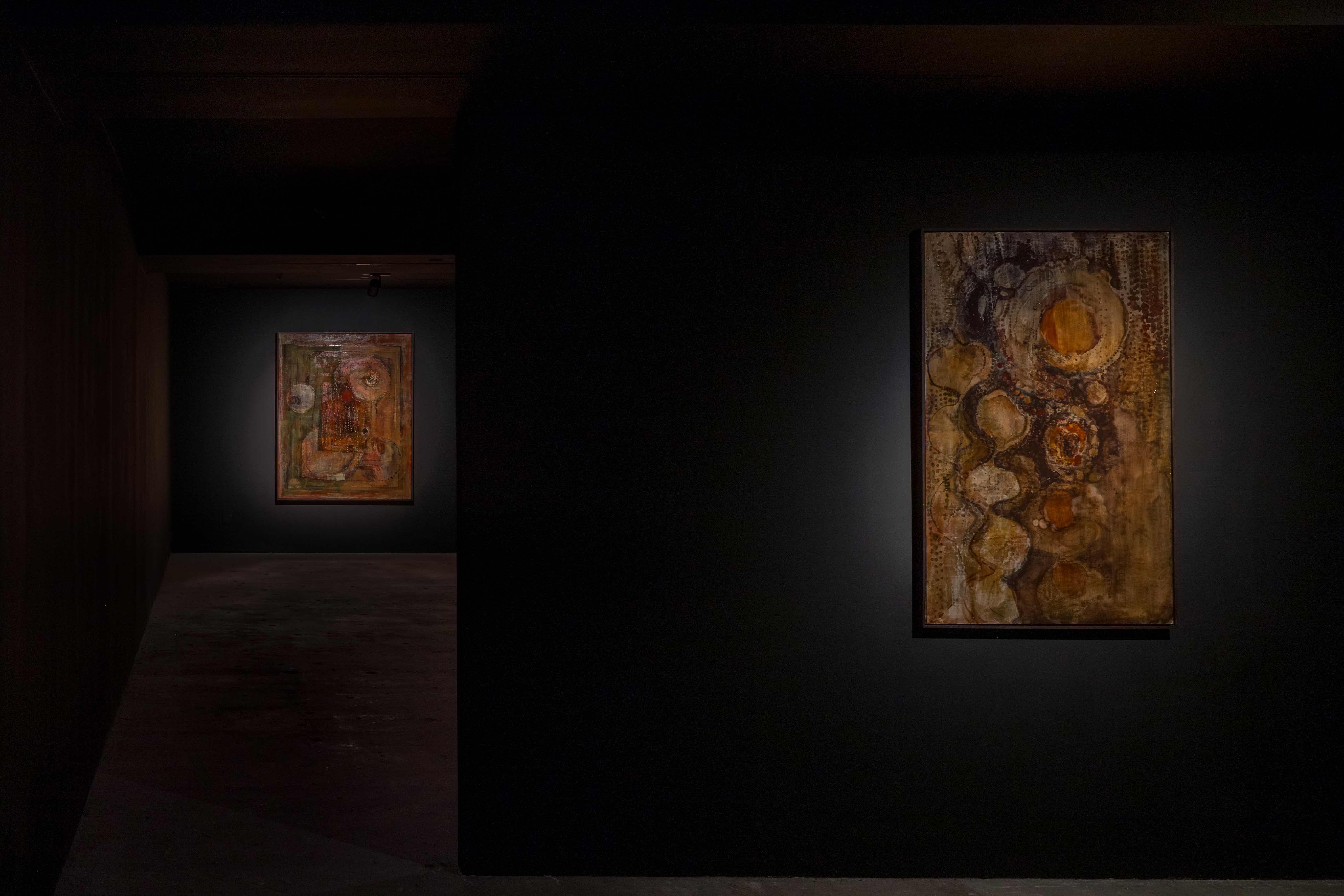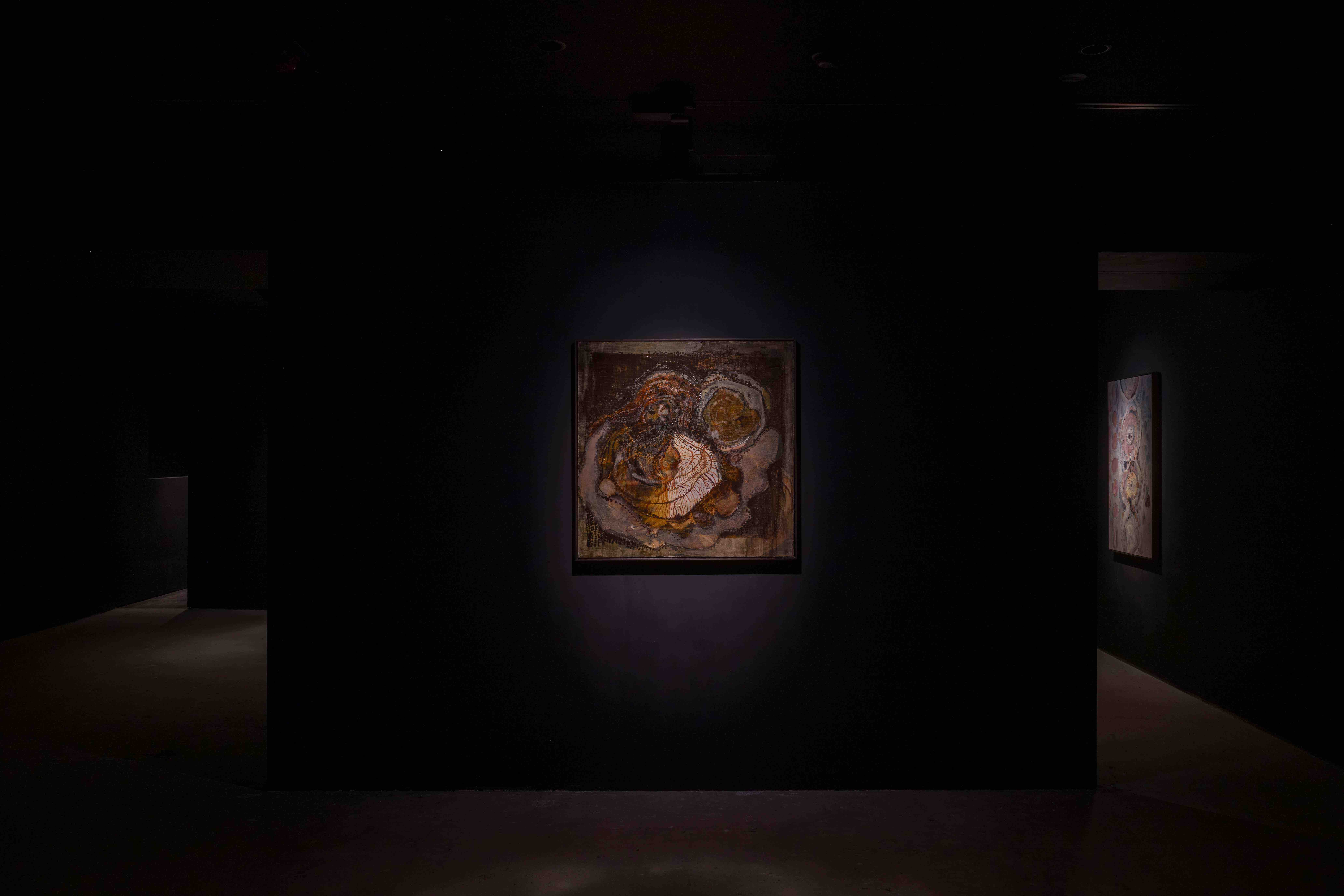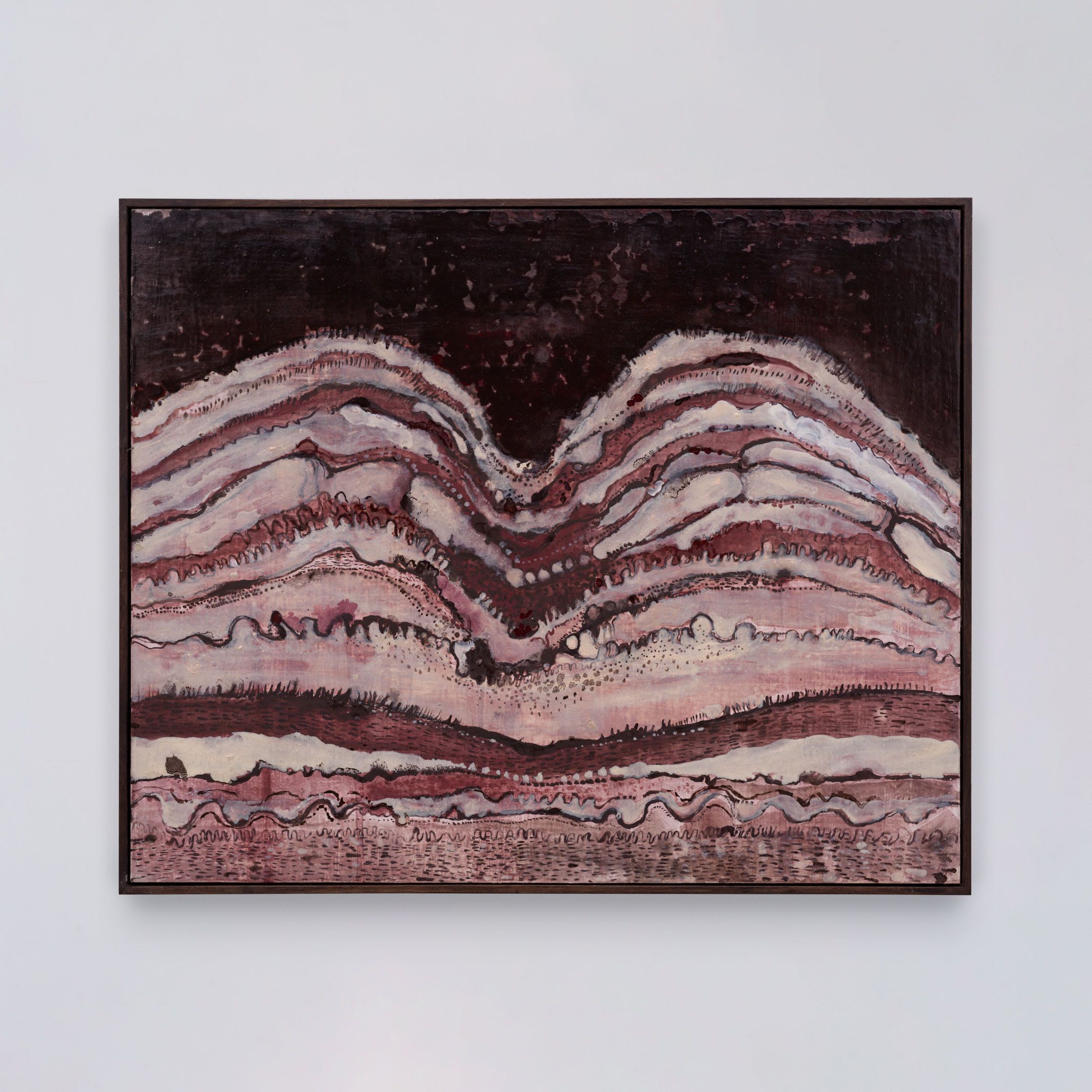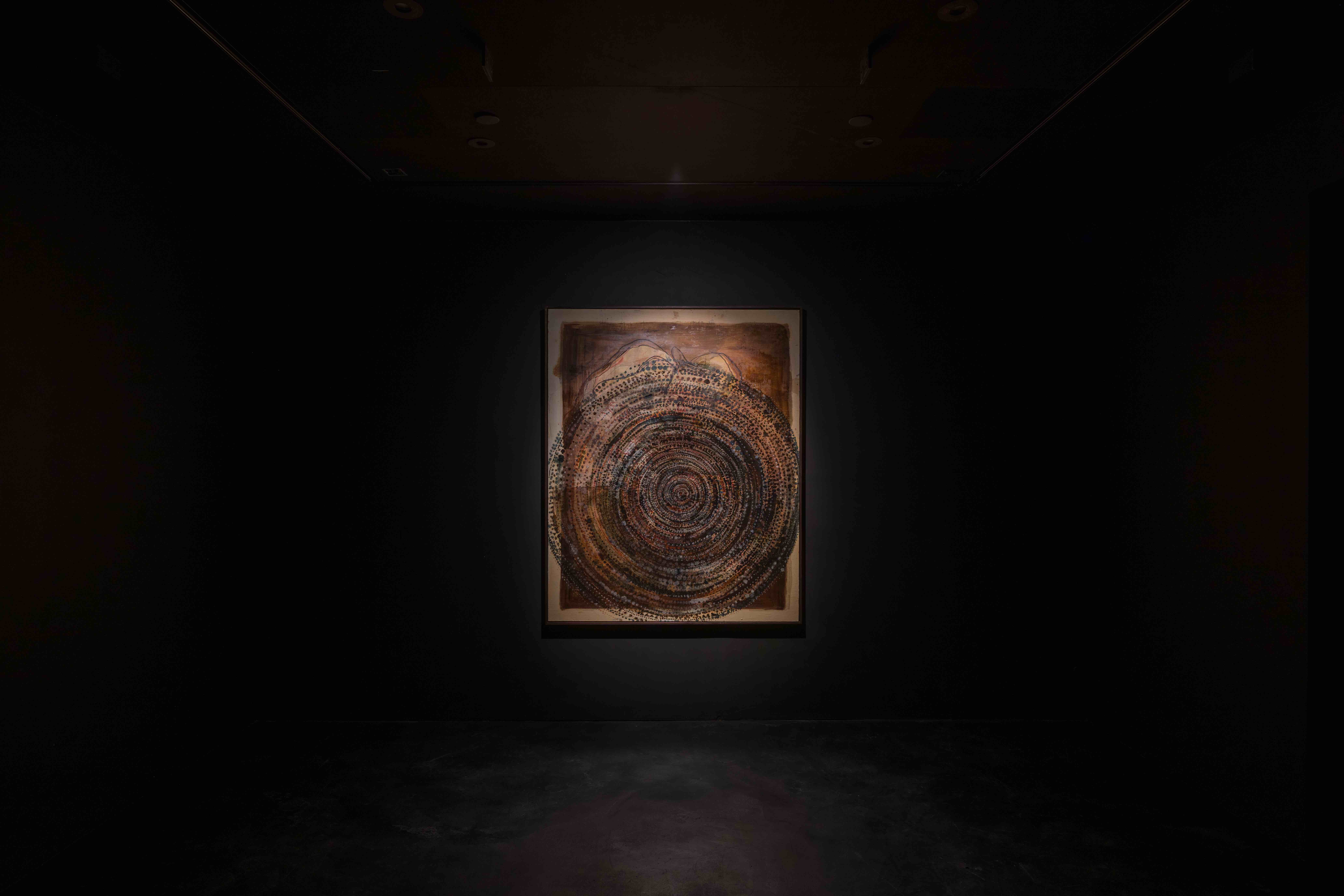Shows
Reina Sugihara’s “Respirare”

Reina Sugihara
Respirare
Empty Gallery, Hong Kong
Dec 8, 2024–Mar 1, 2025
Emerging from the shadows of Empty Gallery’s customarily dark sanctum, Reina Sugihara’s paintings—softly illuminated by spotlights—exuded a quiet primordial force. Her abstract biomorphic forms, rendered in tones ranging from earthy to carnal, resemble blistering encrustations. The thickly painted canvases, some large enough to loom over the viewer, support viscous deposits of pigment and gesso that fissure as they dry. One thinks of scorched terrain, cooling lava, or half-healed wounds and scabs, but the associations are brief—the paintings resist legibility.

Installation view of REINA SUGIHARA’s Brood, 2024, oil on canvas, 93 × 93 cm. Photo by Felix S. C. Wong. Courtesy Empty Gallery, Hong Kong.
Born in 1988, Tokyo-based Sugihara uses anatomy as a point of departure for her practice. A 2022 presentation at Misako & Rosen responded to drawings of human bones, a 2024 show at London's Arcadia Missa focused on the human pancreas, and her recent exhibition in Hong Kong, titled “Respirare” (Latin for “breathe”), took birds’ lungs as its inspiration. Sugihara referred to a book on avian anatomy to create a small clay model of a cross-section of a bird’s air sacs. With the object placed near her easel, she painted the forms repeatedly on canvas, religiously tracing, effacing, and layering in a long ritualistic process.
This persistence is typical of Sugihara’s approach. Over months, sometimes years, she scrapes, gouges, and manipulates her surfaces until the first image ultimately disappears, leaving only impressions. Her process is intuitive, recalling the automatism of the Surrealists. Yet she is more painstakingly attentive, almost supplicatory—enacting a kind of embodied exploration of the physical painting. Her “Respirare” renderings involve not just touch (evoking that which cannot normally be touched: air sacs, lung tissue) but also a tender psychological enfolding—an interpenetration or inhabitation—of the self within an “other,” within each membrane layer, each miniscule capillary, each spectral breath of her subject.

REINA SUGIHARA, Their View, 2024, oil on canvas, 67 × 82 cm. Photo by Felix S. C. Wong. Courtesy Empty Gallery, Hong Kong.
The exhibition contained works of various sizes, some executed in commanding proportions, others on a more intimate scale. All were captivating and enigmatic, featuring dynamic configurations of intriguing forms. The textured surfaces recall postwar European and Japanese Art Informel, while the combination of rugged tactility and earthen hues summon images of Aboriginal art or, curiously—as Sugihara’s works are abstract—prehistoric cave frescoes of animals. Indeed, as one paced through the gallery’s black-cube chambers, the paintings felt almost sacred and deific—akin to what one might experience roaming the caves of Lascaux in France, encountering each mysterious, majestic animal figure by torchlight.
For Georges Bataille, Lascaux marked not just the advent of art, but a period in human history in which we were beginning to understand our relation to—and difference from—the world. Whereas, in his view, animality is a state of living immersed in the world “like water in water” (Theory of Religion, 1989), the human species became ontologically distinct through the use of tools and language. Gaining awareness that we were no longer animal, we began to look at the world from the outside and to create images of it, thus giving birth to art.

Installation view of REINA SUGIHARA’s Digestion (Respirare), 2024, oil on canvas, 165 × 133 cm. Photo by Felix S. C. Wong. Courtesy Empty Gallery, Hong Kong.
In part, Sugihara’s project at Empty Gallery could be likened to a reversal of Lascaux—an attempt to return to a prior, immanent way of inhabiting the world. Through her process, she enacts an inclusive way of becoming-in-the-world, spiritually commingling with the materiality of our ancestors, our fellow animals, and the Earth. By repeatedly ploughing her layered surfaces and laboriously mixing their elements, Sugihara suggests an erasure of the distinction between self and others. Her works are compelling because they reprise a place and time that we once came from and no longer recognize, and yet that sparks a distant memory. There is something “tender, secret, and painful,” as Bataille writes, that “draws out the intimacy which keeps vigil in us, extending its glimmer into that animal darkness.”
Michele Chan is a writer, editor, and translator based in Hong Kong.







